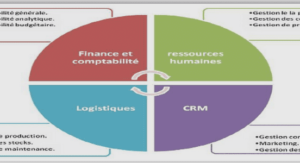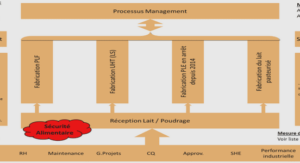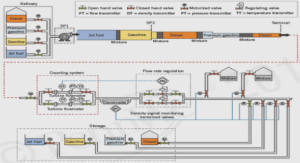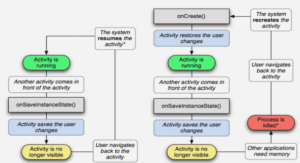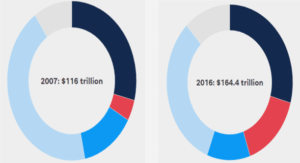Data and Methodology of the Research
Figure: 1.1 illustrates the methodological process of this research: Once the general topic is determined, the process commences with a review of the literature of microfinance and microfinance investment fund by using various sources, including books, articles, technical reports and websites. Then, the research problem and questions are identified and precisely asked, and after gaining an understanding of the context and issues, the specific topic can be decided upon. The next step is the formulation of a research framework based on the literature review as a research plan in response to the research questions. The third step relates to selecting the material to be studied, the source of the data to be accessed in order to answer the research problem, and subsequently the collection of data. As the quantitative data related to microfinance funds is difficult to access, the main research problem, and the nature of this research, is to explore the behavior and perception of funds in microfinance investment.
Consequently, the qualitative approach is more appropriate in this research. This thesis will use secondary data, textual information to be collected from the websites of microfinance funds. The sample funds will be gathered and selected from the list of microfinance investment funds in MIX Market1 database. In step four, data will be analyzed using the content technique. The large amount of textual data will be categorized and collated with the aid of computer software (NVivo.8) to find out the main categories of answer to each question. As this study will investigate the investment strategy performance of microfinance funds, deep quantitative investigation is not necessary; however, a statistical description will be used to discuss the results, identifying similarities and differences with similar prior studies, and to investigate the relative themes. This will be followed by interpreting the empirical results, relating them to existing theories and studies, and summarising the key findings. Finally, research conclusions will be drawn, along with proposals for future research.
Outline of the Study
This thesis is organized into six chapters (see Figure: 1.2). Each chapter is designed as an overview of the topic with a response to the research question. It starts with an introduction chapter: 1, which provides an overview of this thesis, including a brief background on microfinance and microfinance investment funds, states the research problem and objectives, introduces the research question and sub-questions, scope and delimitation, and the data and methodology of the research. Chapter: 2 reviews the characteristics of microfinance, introduces the institutions who provide these services, the evolution of the sector, the target groups, financial products and services, and how they are implemented. Following on, chapter: 3 critically reviews the literature of microfinance investment funds, investigates the linkage of microfinance funds to microfinance institutions, and the current issues in the microfinance sector. It also discusses the financial instruments which are usually used in microfinance investment, the investors in these funds, the of microfinance funds, and the risks associated in microfinance investment.benefits Chapter: 4 describes the research framework which can be established, relying on the research problem and existing literature, and determines clearer and narrower research questions and sub-questions. This chapter also presents the research methodology, which introduces the theoretical data analysis technique and its real application. The qualitative content technique will be applied to analyze the collected data, exploring the nature of investment and revealing new information. Reporting and discussing the findings are made in Chapter: 5. The empirical results under each research question are identified, described and interpreted with quoting a unit of text in collected data confirming the conclusion. Since the data can be collated and analyzed using statistical techniques, they are also discussed by linking to the similar previous studies which generally used quantitative data. A chi-square model will be used to test the relationship between investigated variables to answer the research questions. Before going to the last Chapter: 6, contains a summary of the key findings, observations on the degree of variation from previous studies, and highlighting useful new information. Conclusions are drawn, based on the previous chapters. This study concludes with a note on the limitations and suggestion for future research.
What is a Microfinance Institution (MFI)?
The term “microfinance institution (MFI)” refers to an organization that offers microfinance services. In economics terms, a microfinance institution works as a poverty-focused financial institution to offer financial services to a segment of the population who are not being served by mainstream financial services providers, aiming to increase their living standard. These definitions not only indicate the scope of microfinance per se but also point out the need to balance between the social and financial objectives of microfinance (Madurai, 2003). Generally, MFIs provide small credit at reasonable interest rates to poor and low-income families, micro entrepreneurs, and the self-employed such as market vendors, taxi drivers, farmers, etc., who are unable to get a loan from traditional banks due to lack of collateral and credit history. Through microloans provided by MFIs, borrowers are able to invest in income generating activities, to increase revenues, and thereby improve the standard of living for their family. As small businesses grow, they often offer employment to other people in the community. In this view, microfinance institutions play a role that complements the banking system, by developing innovative lending techniques, including joint-liability lending, flexible repayment loans, tiny loans with dynamic incentive3, progressive lending and frequent repayment installments etc., to lend to borrowers whom the banks view as too costly or too risky to reach.
Evolution of Microfinance
Industry Microfinance was found in ancient times, as the idea of granting loans developed over thousands years; the Jewish community, for example, lending to the poorest among them. Microfinance notably had its roots in micro-lending, and started within non-governmental organizations with social and development objectives of fighting against poverty and “empowering” the marginalized. The first experiments on microfinance models was been conducted in Burkina Faso and Cameroon in the sixties, where savings and credits models appeared, but only for social action (Ayayi et al., 2007). In the seventies, government and international donors provided cheap productive credit to the poor, particularly small farmers and those who had no previous access to credit facilities, aiming to promote agricultural products. In the 20th Century, microfinance has taken off gradually. Microfinance pioneers shifted into providing loans to “non-farm enterprises”, small entrepreneurs who had no capital to start a small business (street vending, rice trading, home handicrafts, livestock-raising, etc.), or to those who had been forced to pay usurious interest rates, without asking for collateral to secure loans.
The success and the constant growth of microfinance benefited greatly from the new lending practices under the peer group micro-lending (also called Joint-Liability lending) model of the Grameen Bank9 in Bangladesh. Prof. Mohammed Yunus, the founder of Grameen Bank, applied the methods of a pilot group lending scheme for the poorest women and landless people that was notably successful, with profits and low credit risks. The group lending of Grameen Bank was a major source of new formal microcredit lending techniques which were then copied and taken by MFIs to be used in countries such as Cambodia, Nepal, and Philippines, etc. In those developing countries NGOs were major microfinance service providers to the poor in remote areas. For instance, in Latin America, ACCION International supported the development of solidarity group lending to urban vendors, and Fundacion Carvajal developed a successful credit and training system for individual micro-entrepreneurs. Given this favorable experience, there was an increase in the number of microcredit providers not only within developing countries but also in developed countries. For example, Agency for Development and Economic Initiative (ADIE) and Active Network France in France, under the leadership of the Microfinanza in Italy, and Finnvera in Finland.
Acknowledgments |

